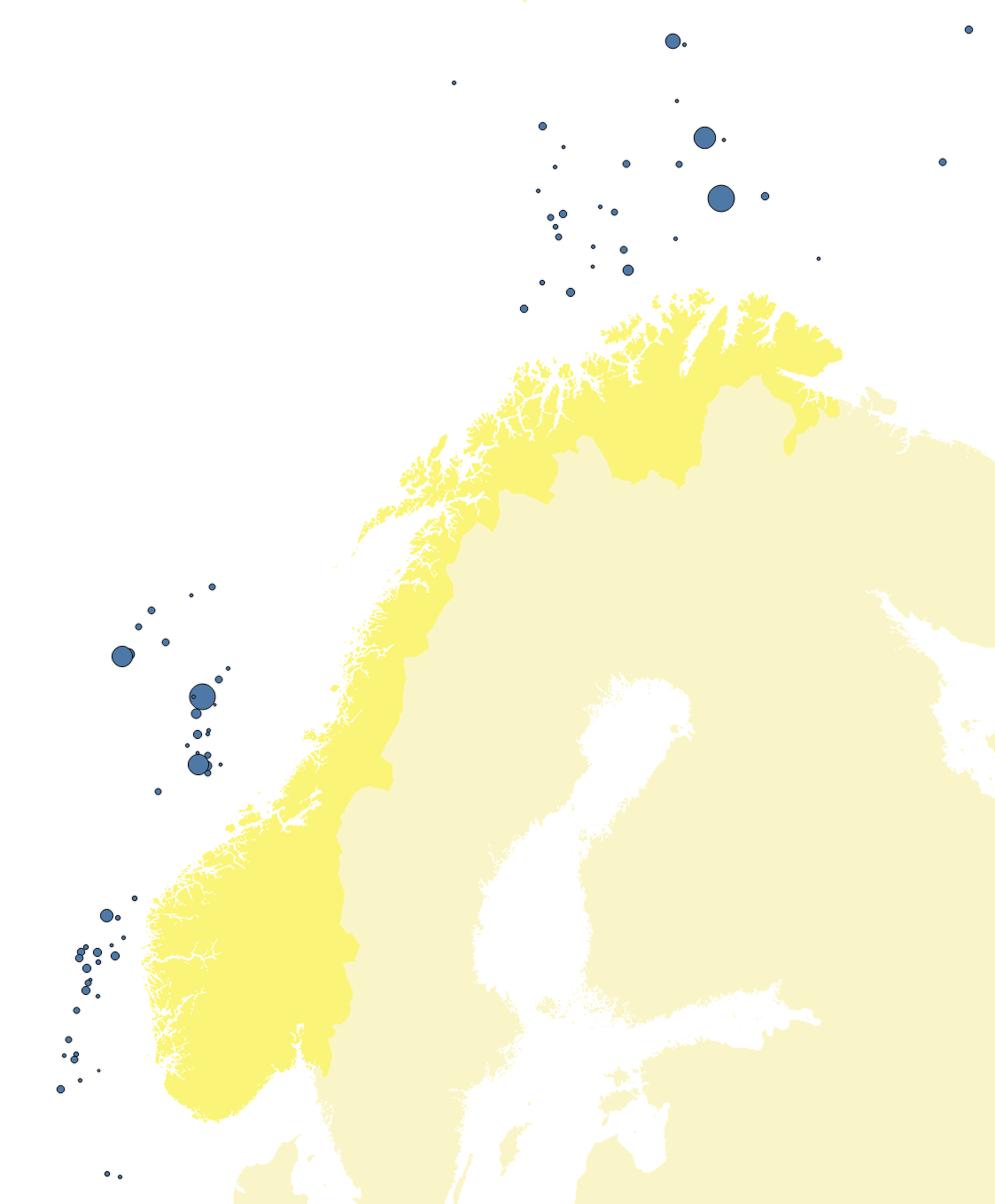Valuable gas resources untouched

Kjersti Dahle, the NPD's Director for Technology, analyses and coexistence (Photo: Arne Bjørøen)
12/5/2023 The Norwegian Petroleum Directorate (NPD) has conducted a mapping of gas resources that, for various reasons, have yet to be developed. Several of these discoveries could be produced in a manner that is profitable from a socio-economic perspective.
About 65 per cent of the overall gas resources on the Norwegian shelf have not yet been produced. Some of the remaining gas resources face a variety of challenges that could complicate production.
The NPD has mapped the gas resources which lack concrete development plans, and has also explored which measures could potentially be implemented to facilitate their development.

This map shows an overview of gas resources which, for various reasons, licensees have not made a decision to develop. The size of the points has been scaled based on the expected gas volume in place.
Challenging resources
"Despite gas having a significantly higher recovery rate than oil, we'll never be able to produce all the gas. There are normally good reasons for low recovery rates in gas fields. We believe that the licensees are doing a good job to maximise recovery rates. It's challenging to extract extra gas beyond this," says Kjersti Dahle, the NPD's Director for Technology, analyses and coexistence.
She goes on to say that, "identifying which gas resources are difficult to develop, and what's needed to ensure that the resources are produced, gives us a sound basis for dialogue and potential measures along with the industry so that these resources can be recovered".
The background here is that, with the current plans and projects, the NPD expects gas production on the Norwegian shelf to be maintained at a high level over the next five years. After this, production is expected to decline at a fairly rapid rate.
"There are considerable gas resources in discoveries and fields in operation. It makes sense to think that higher gas prices can drive necessary technology development, coordination and new infrastructure in order to realise this gas, as long as there is the will and ability to do this," Dahle says.
Significant uncertainty
As of 31 December 2022, there were 84 gas discoveries on the shelf with 1273 GSm3 of gas in place (GSm3 – one billion standard cubic metres). These resources are found in reservoirs with different degrees of complexity, which has made them difficult to develop.
The NPD's calculations show a significant value potential for many of these discoveries, but it is highly uncertain how much of this can be produced.
This is due to challenges in the subsurface, such as tight reservoirs, high pressure and temperature, challenging gas quality and/or low pressure. Export options, cost level and future gas prices will also affect which resources can be developed.
Read more about tight reservoirs
Lack of gas infrastructure capacity is an issue in the Barents Sea, since Melkøya is fully booked until after 2040. Here, there is clearly a need for coordination and new capacity in order to transport and export the gas.
Director Communication, security and emergency response
The NPD has mapped the gas resources which lack concrete development plans, and has also explored which measures could potentially be implemented to facilitate their development. This work is based on a selection of discoveries and fields in the North Sea, Norwegian Sea and Barents Sea.
Updated: 12/15/2023